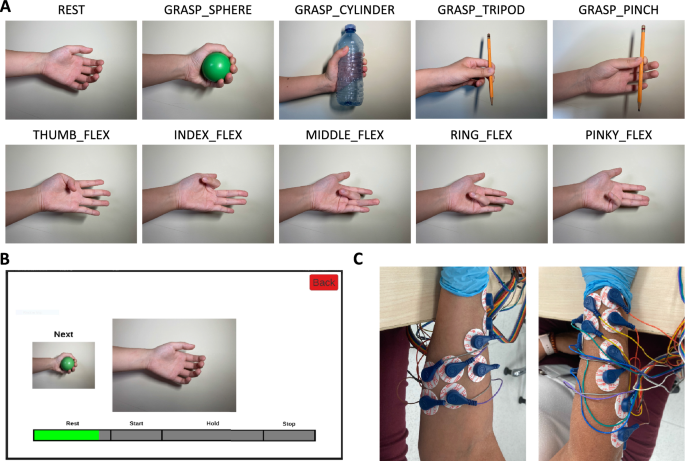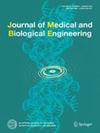Effects of Electrode Position Targeting in Noninvasive Electromyography Technologies for Finger and Hand Movement Prediction
IF 1.6
4区 医学
Q4 ENGINEERING, BIOMEDICAL
引用次数: 0
Abstract
Abstract Purpose Stroke patients may need to undergo rehabilitation therapy to improve their mobility. Electromyography (EMG) can be used to improve the effectiveness of at-home therapy programs, as it can assess recovery progress in the absence of a health professional. In particular, EMG armbands have the advantage of being easy to use compared to other EMG technologies, which could allow patients to complete therapy programs without external assistance. However, it is unclear whether there are drawbacks associated with the fixed electrode placement imposed by current armband designs. This study compared the hand gesture prediction capabilities of an off-the-shelf EMG armband with fixed electrode placement and an EMG setup with flexible electrode positioning. Methods Ten able-bodied participants performed a series of hand and finger gestures with their dominant hand, once with an EMG armband (Untargeted condition) and once with electrodes deliberately placed on specific muscles (Targeted condition). EMG features were extracted from overlapping sliding windows and were used to (1) classify the gestures and (2) predict finger joint positions as measured by a robotic hand exoskeleton. Results For the classification task, a logistic regression model performed significantly better ( $$p < 0.001$$

电极位置定位在无创肌电技术中对手指和手运动预测的影响
摘要目的脑卒中患者可能需要接受康复治疗以改善其活动能力。肌电图(EMG)可以用来提高家庭治疗方案的有效性,因为它可以在没有健康专业人员的情况下评估康复进展。特别是,与其他肌电图技术相比,肌电臂带具有易于使用的优势,可以使患者在没有外部帮助的情况下完成治疗计划。然而,目前尚不清楚是否存在与当前臂章设计所施加的固定电极放置相关的缺点。本研究比较了固定电极放置的现成肌电臂带和柔性电极定位的肌电臂带的手势预测能力。方法10名身体健全的参与者用惯用手进行一系列手部和手指手势,一次是带肌电臂带(非目标组),一次是在特定肌肉上放置电极(目标组)。从重叠的滑动窗口中提取肌电特征,并用于(1)对手势进行分类,(2)预测由机器人手外骨骼测量的手指关节位置。结果对于分类任务,逻辑回归模型的表现明显更好($$p < 0.001$$ p &lt;0.001),目标条件($$55.8\% \pm 10.1\%$$ 55.8) % ± 10.1 % ) compared to the Untargeted condition ( $$47.9\% \pm 11.6\%$$ 47.9 % ± 11.6 % ). For the regression task, a k -nearest neighbours model obtained significantly lower ( $$p = 0.007$$ p = 0.007 ) mean RMSE values for the Targeted condition ( $$0.260 \pm 0.037$$ 0.260 ± 0.037 ) compared to the Untargeted condition ( $$0.270 \pm 0.043$$ 0.270 ± 0.043 ). Conclusion We observed a trade-off between predictive accuracy and ease-of-use of the EMG devices used in this study. It is important to consider such a trade-off when developing clinical applications such as at-home stroke rehabilitation therapy programs.
本文章由计算机程序翻译,如有差异,请以英文原文为准。
求助全文
约1分钟内获得全文
求助全文
来源期刊

Journal of Medical and Biological Engineering
ENGINEERING, BIOMEDICAL-
CiteScore
4.30
自引率
5.00%
发文量
81
审稿时长
3 months
期刊介绍:
The purpose of Journal of Medical and Biological Engineering, JMBE, is committed to encouraging and providing the standard of biomedical engineering. The journal is devoted to publishing papers related to clinical engineering, biomedical signals, medical imaging, bio-informatics, tissue engineering, and so on. Other than the above articles, any contributions regarding hot issues and technological developments that help reach the purpose are also included.
 求助内容:
求助内容: 应助结果提醒方式:
应助结果提醒方式:


